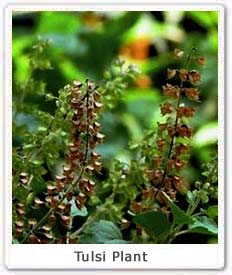Classification
Other names : Cape aloe, Aloe curacao, Barbadoes aloe, Venezuela aloe, Indian alces, Ghirita, Lu hui, Star Cactus are the other names used for the Aloe Vera. It is also called miracle plant, Burn plant, medicine plant and first-aid-plant.Kingdom : Plantae Division Magnoliophyta Class: Liliopsida Order : Asparagales Family : Asphodelaceae Genus : Aloe Species: A .vera Zoological name : Aloe Vera Found In : Ranthambore Wildlife Sanctuary
Description : Aloe Vera grows to a height of 12 to 16 inches. It has a fibrous root system. It does not have stems. It has thick freshly leaves with sharp points, which are up to 18 inches long and 2 inches wide at the base. Its leaves are even long and triangular in shape. The tissue in the center of the 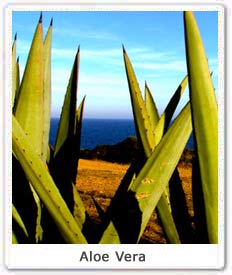 Aloe leaf contains a gel which yields the aloe gel. Its leaves are rich in water that is why it can survive for years. These leaves have spiky margins and are blotched creams. It is the member of the Lilly family. The roots of the pant are thick and fibrous. The fruit is the triangular capsule containing numerous seeds.
Aloe leaf contains a gel which yields the aloe gel. Its leaves are rich in water that is why it can survive for years. These leaves have spiky margins and are blotched creams. It is the member of the Lilly family. The roots of the pant are thick and fibrous. The fruit is the triangular capsule containing numerous seeds.
Other species of Aloe Vera : There are more than 200 species of Aloe Vera. Aloe Barbadensis Miller, Aloe Saponaria, Aloe Chinensis, Aloe Variegata, Aloe Forex, Aloe Lalifolia and Curacao Aloe are some of the known species of Aloe Vera.
Location : Aloe Vera is cultivated throughout India. It is commonly found in Mumbai, Gujrat and South India. It mainly grows in the tropical and sub tropical areas. It grows well on sandy and well drained soil. It is widely grown in the Ranthambore National Park in India.
Cultivation methods : Aloe Vera plant is propagated through the seed. It prefers a well drained sandy soil in sunny location. Aloe Vera needs the temperature of above 40 degrees. They should be potted in the spring season and watered carefully until established. It grows in the arid climate. They should be watered regularly in the summers. But over watering can kill the plant. It also grows in partial shade. It reaches the maturity inn four years when the leaves are harvested.
Other uses : Aloe Vera is a very popular potted plant. It is grown in houses for the decoration. The leaf sap is used to make a soothing and healing moisturizing cream, which is good for the dry skin. It is used in the making of anti wrinkle cream. It is even used in the preparation of shampoos.
Cultural Importance :Aloe Vera has been mentioned several times in the sacred scriptures. It is believed to have been used for the preservation of the body of the Jesus Christ. It is called as the plant of immorality. It is also mentioned in the holy book of Bible. It has been used by the tribal people as a medicine for the century.



 3:46 PM
3:46 PM
 Unknown
Unknown
 Posted in
Posted in 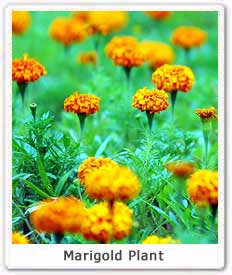 Description : It flowers from July to September. The scented flowers are hermaphrodite (have both male and female organs). It is hardy to zone 6 and is frost tender. The lower leaves are broad and spatula shaped. Upper leaves may be oblong, are smooth at the edges, and are arranged alternately along the stem. Seeds are crescent to horseshoe shaped with the rough exterior. Its branching stem grows to the height of 30- 60 cm.
Description : It flowers from July to September. The scented flowers are hermaphrodite (have both male and female organs). It is hardy to zone 6 and is frost tender. The lower leaves are broad and spatula shaped. Upper leaves may be oblong, are smooth at the edges, and are arranged alternately along the stem. Seeds are crescent to horseshoe shaped with the rough exterior. Its branching stem grows to the height of 30- 60 cm.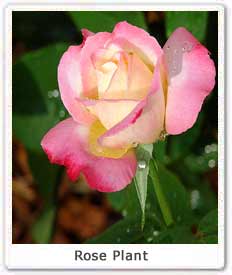 Description : There are several varieties of the Indian Roses which includes white rose, pink rose, maroon rose, red rose, yellow rose and orange rose. It has thorn on its stems. The cane has leaves and budeyes. A leaf consists of stipule, petiole, and leaflets. The leaves are -15 cm long. The leaflets usually have the segrrated margins and few small prickles on the underside of the stem. Most of the roses are deciduous. The flower has five petals.
Description : There are several varieties of the Indian Roses which includes white rose, pink rose, maroon rose, red rose, yellow rose and orange rose. It has thorn on its stems. The cane has leaves and budeyes. A leaf consists of stipule, petiole, and leaflets. The leaves are -15 cm long. The leaflets usually have the segrrated margins and few small prickles on the underside of the stem. Most of the roses are deciduous. The flower has five petals.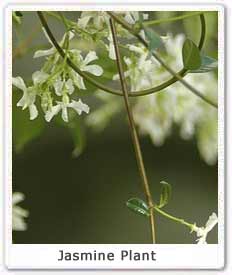 Description : Jasmine is a evergreen semi vining shrub. It grows to the height of 8- 10 feet. The flower is about one inch. It has oval green rich leaves, which have five to nine leaflets. Each leaflet is 2-3 inches long. Jasmine flowers are white in colour. Its stems are slender, trailing, green and glaborous.
Description : Jasmine is a evergreen semi vining shrub. It grows to the height of 8- 10 feet. The flower is about one inch. It has oval green rich leaves, which have five to nine leaflets. Each leaflet is 2-3 inches long. Jasmine flowers are white in colour. Its stems are slender, trailing, green and glaborous.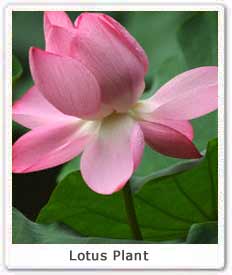 Description : Lotus is the water plant. It has broad floating leaves and bright fragrant flowers. The leaves and flowers float and have long stems that contain air spaces. It has many petals overlapping in the symmetrical pattern. The root functions of the Lotus are carried out by rhizomes that fan out horizontally through the mud below the water. The round leaves are upto 50 cm in diameter. The flowers are rosy pink with little bit of white shade. The seeds are hard and dark brown in colour. They can vary in shape from round to oval to oblong. The Lotus Flower opens in the morning and the petals fall in the afternoon.
Description : Lotus is the water plant. It has broad floating leaves and bright fragrant flowers. The leaves and flowers float and have long stems that contain air spaces. It has many petals overlapping in the symmetrical pattern. The root functions of the Lotus are carried out by rhizomes that fan out horizontally through the mud below the water. The round leaves are upto 50 cm in diameter. The flowers are rosy pink with little bit of white shade. The seeds are hard and dark brown in colour. They can vary in shape from round to oval to oblong. The Lotus Flower opens in the morning and the petals fall in the afternoon.